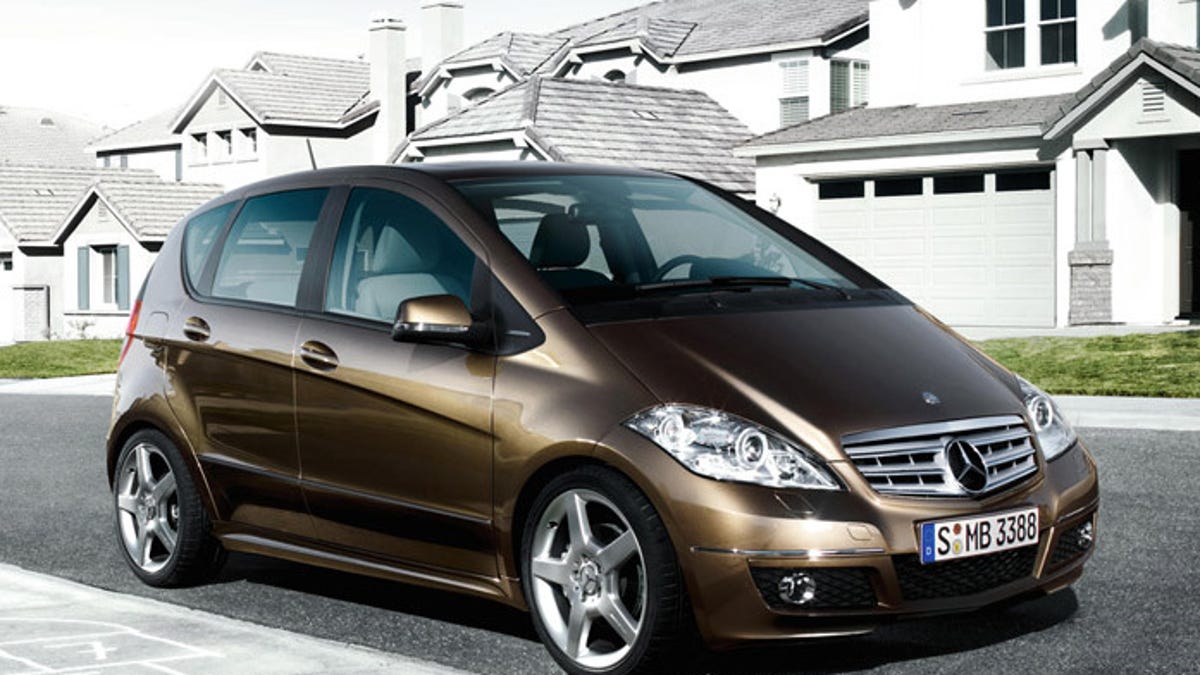I have seen the future and it's European
A short look at the differences between the car populations of the U.K. and the U.S.

On a recent trip to England and the Isle of Man on a 1965 BSA 650 Thunderbolt, I saw the future--or at least the future American automotive landscape.
There were no outrageous concept cars brought to life (well, OK, a few Aston Martins, some Lotuses, numerous TVRs, and a Ferrari Owners Club parade through downtown London), but no flying cars--although a car that could also function as a boat, like the 1960s Amphicar, might have been useful considering the weather. The cars seen in the UK were much smaller than what we have here, and pickups and SUVs conspicuous by their absence. Vans, in sizes from truly micro to large, as exemplified by the Mercedes-Benz/Dodge Sprinter, took the place of our commercial pickups and utility vehicles.
Chrysler does have some market penetration with its Jeep Grand Cherokees, as both are sold in right-hand drive form. Land Rovers are used by farmers, not soccer moms. And most cars are what would be considered compact or smaller here, not midsize. Think Volkswagen Golf/Rabbit/Jetta, as medium-sized cars, with the smaller Polo being more numerous. A Toyota Camry is a big car on the other side of the Atlantic, and a Honda Accord is a much different and smaller automobile.
Why? Reason No. 1 is fuel cost. Signs on petrol (that's gasoline in British English) stations said anywhere from 1.12 to 1.26--that's in pounds Sterling (multiply dollars by two, more or less) and per liter. Multiply that almost two by almost four. That's over eight dollars a gallon for unleaded premium, and, as here, a bit more for diesel. Makes five bucks American seem like a deal.
Reason No. 2? British (and continental) cities and towns (especially the city centers,) were mostly built before the automobile. Population density is greater, roads are narrower, and parking for cars is nearly non-existent.
Did I see the future of American cars? Given the recent decision to increase the Corporate Average Fuel Economy (CAFE) standards, and the approval of that decision by the U.S. auto industry, it's quite possible. There are physical differences between the U.S. and the U.K. and Europe--the U.S. is much larger, and people travel greater distances regularly. But, that just makes improved fuel economy all the more attractive.
This will require some major changes in thinking by both the automakers and buyers. We are currently locked into a "bigger is better" way of thinking about cars. Most manufacturers see subcompacts as cheap, low-profit items that at best serve to bring new customers into the corporate fold. And those customers are expected to move up, meaning to larger and more expensive--and profitable--cars during their lifetimes.
And car buyers have bought into that. Even European and Japanese premium luxury cars are big--and profitable, as material cost is the least expensive part of automobile development and construction. I suspect that development costs for a good subcompact are not all that much less than for a premium, luxury car.
BMW's Mini division showed that there is a market for a premium subcompact in the U.S., and BMW itself is now bringing over its smallest car, the 1-Series--albeit in coupe and convertible form, not the four-door hatchback that was so prevalent in England. Audi has the A3 here, but there is a smaller A2 overseas. The Mercedes-Benz A-Class, not much larger than a smart car, is popular across the Atlantic. Could it be viable here? And if so, what would competition from Cadillac, Lexus, Infiniti, Acura, or Lincoln be like? Visualize not massive SUVs or sedans, but rather small, space- and fuel-efficient vehicles, perhaps with the one-and-a-half box shape of the A-Class or two-box of the A3, Mini, or 1-Series hatchback. And, for increased efficiency, visualize diesel power.
Despite the fuel-price premium, diesels are prevalent in the U.K. and Europe. They have fuel-economy advantages over gasoline counterparts, and can be at least as efficient as a gasoline-electric hybrid on the highway. I've seen 40-plus mpg out of a Mercedes E-Class Bluetec at 70 mph on the freeway, and a smaller, lighter car can do even better. With low-sulfur diesel fuel and engine development, even the California Air Resources Board now approves of new diesels.
More on that later in the week.
Oh, and that '65 Thunderbolt? 50-plus mpg, thank you, and reliable first- or second-kick starting once I learned the cold, damp weather starting drill. Vibration? Not bad at all, although regular checks of nuts and bolts are a good idea. Electronic goodies like a GPS system? Not a chance, not with stone-age 6-volt, positive earth Prince Of Darkness electrics. Great fun, and easier to adapt to driving on the left.